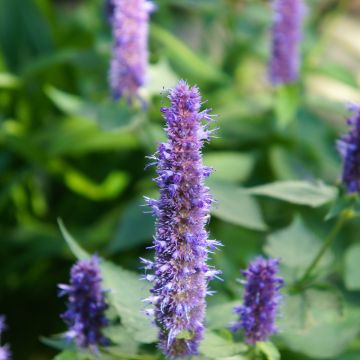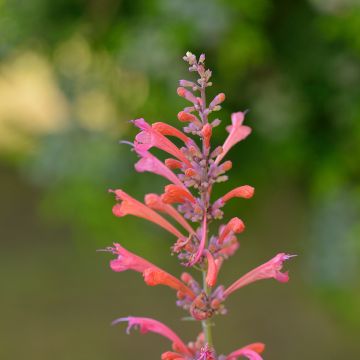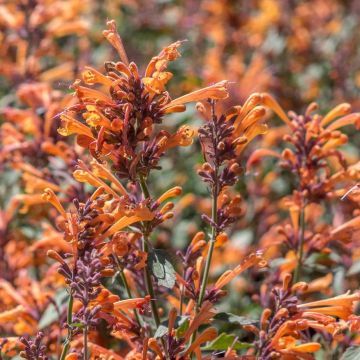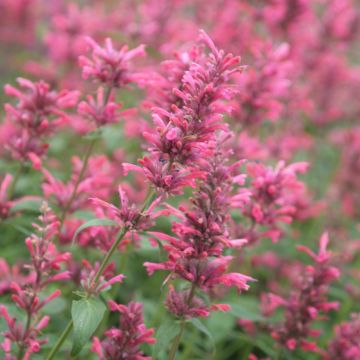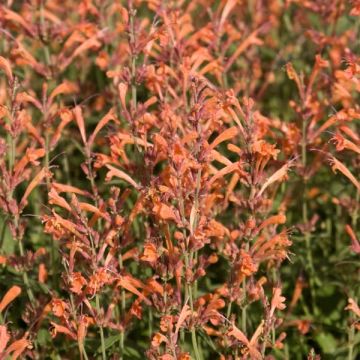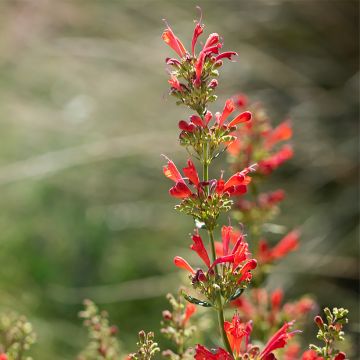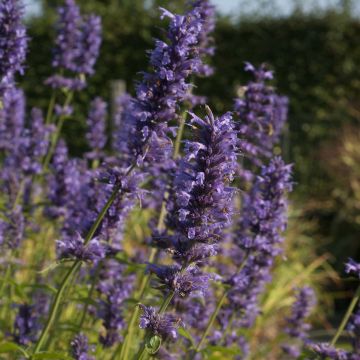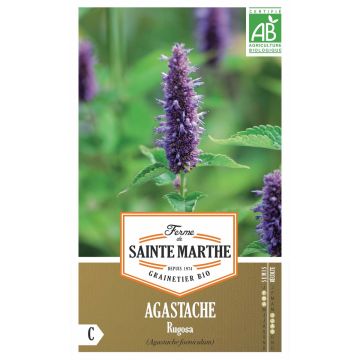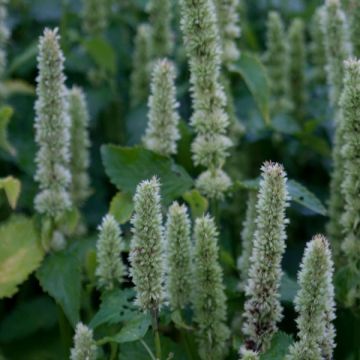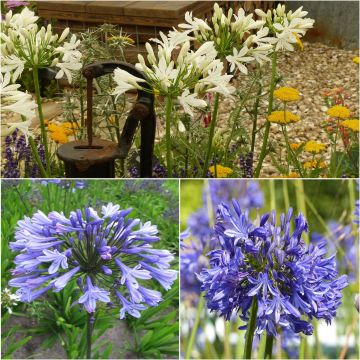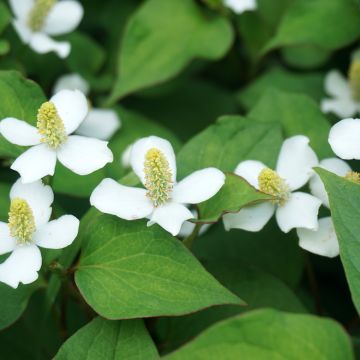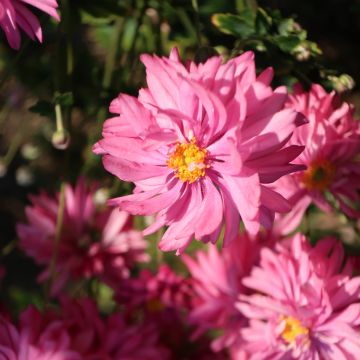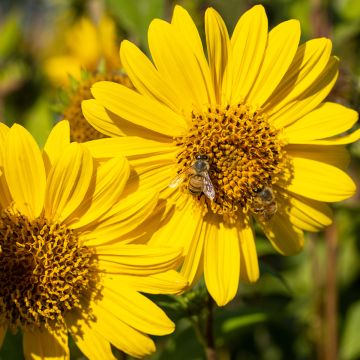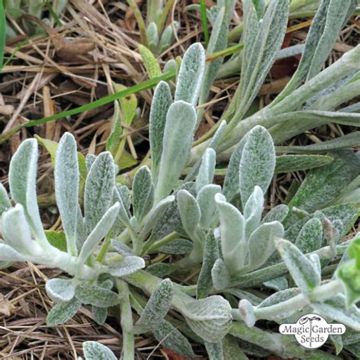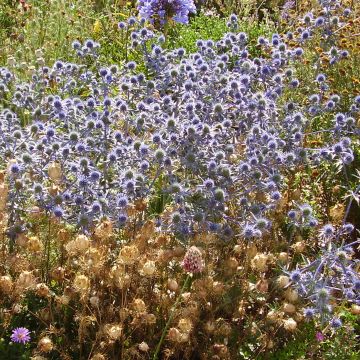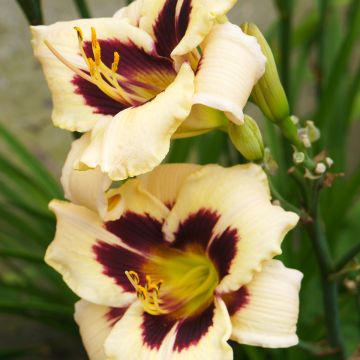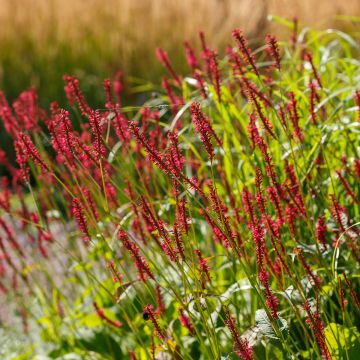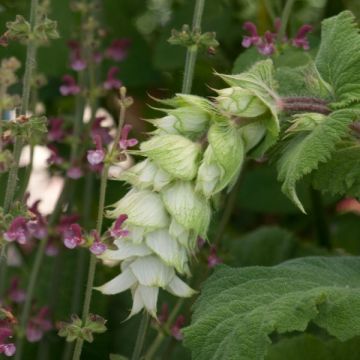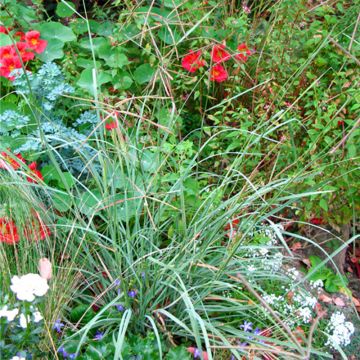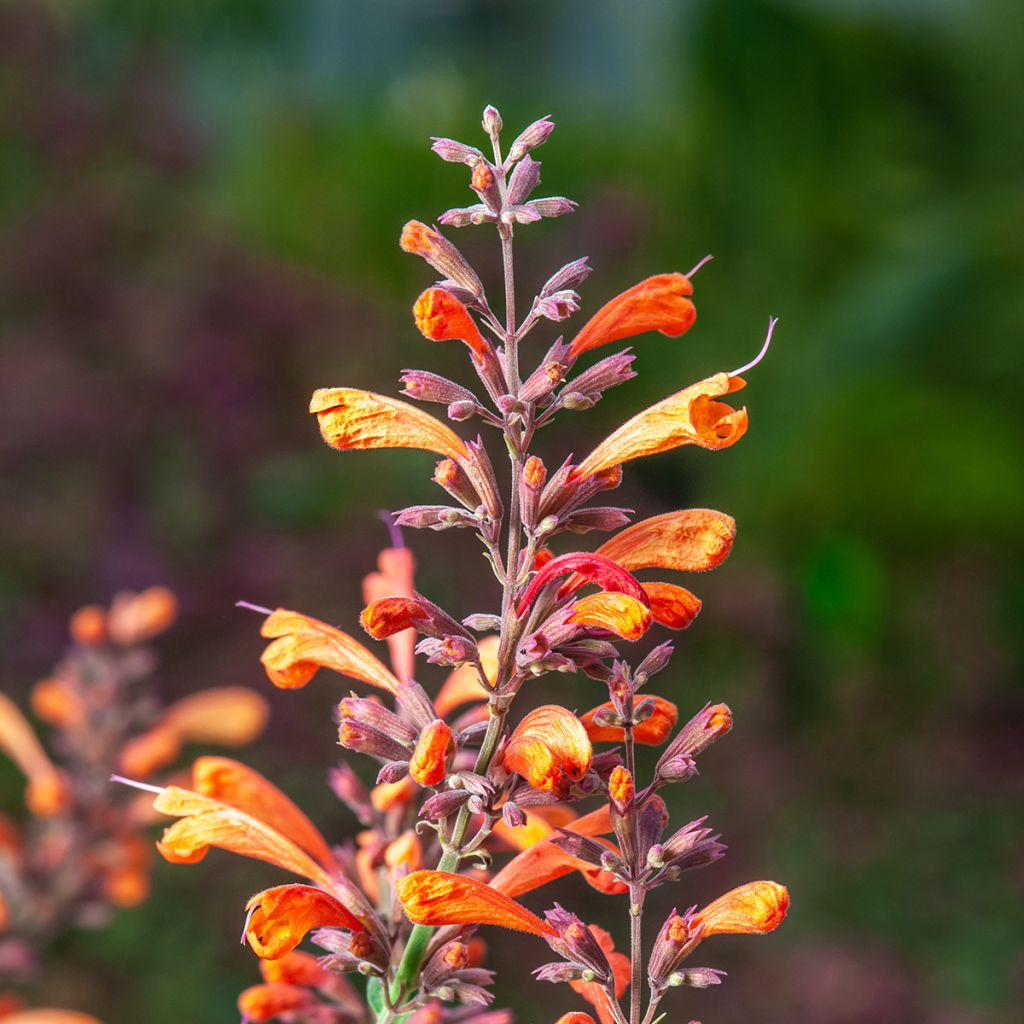

Agastache Sunny Sparks Tangerine
Agastache Sunny Sparks Tangerine
Agastache 'Sunny Sparks Tangerine'
Giant hyssop Sunny Sparks Tangerine
This item cannot be shipped to the selected country
Delivery charge from €5.90
More information
Schedule delivery date,
and select date in basket
This plant carries a 12 months recovery warranty
More information
We guarantee the quality of our plants for a full growing cycle, and will replace at our expense any plant that fails to recover under normal climatic and planting conditions.
From €5.90 for pickup delivery and €6.90 for home delivery
Express home delivery from €8.90.
Does this plant fit my garden?
Set up your Plantfit profile →
Description
Agastache Sunny Sparks Tangerine is a hardy variety, with a particularly compact habit. This perennial forms an upright and dense clump with dark green foliage that is scented with aniseed and mint. From July onwards, it develops slender spikes of small, elongated flowers in a soft orange that attract butterflies and bees in large numbers. It is a vigorous and hardy hybrid that can tolerate some drought once established. It is an ideal perennial for sunny borders. Plant it near pathways or patios to enjoy its fragrance. Choose a position in the sun and plant it in rich, well-drained soil. Provide a little water during summer. Remove faded flower spikes to support its magnificent flowering.
Agastache Sunny Sparks Tangerine is a plant from the Lamiaceae family, related to salvias, catmints, and thymes. This herbaceous perennial forms a large upright clump, with highly branched stems, reaching a height of 50cm (20in) and a width of 60cm (24in). The plant bears triangular leaves, 5cm (2in) long, with toothed edges. The dark green leaves grow along the length of the angular flower stems. When crushed, they release a pleasant scent of aniseed and mint. Flowering occurs continuously from July to October in the form of upright, densely packed inflorescences composed of small tubular orange flowers. This particularly nectar-rich and honey-bearing flowering attracts a large number of bees and butterflies. This variety is hardy down to -15°C (5°F). It will be more perennial in soil that remains dry in winter.
Agastache Sunny Sparks Tangerine is easy to grow in well-drained soil. It tolerates occasional drought. It is ideal in sunny flower beds with a slightly wild appearance, and in large flower borders. It looks wonderful in pots on a patio, in groups of three identical plants or mixed with blue, violet, or red agastaches. Water generously during the flowering period in hot regions. This trouble-free perennial adds substance to flower beds composed of grasses (such as stipas, eragrostis, pennisetums), herbaceous salvias, tall daisies, echinaceas, and goldenrods. It also pairs very well with yellow or orange shrubby potentillas, as well as with Geranium 'Azure Rush'. It will also look lovely with purple asters. It is highly attractive to bees, making it ideal for planting in orchards and vegetable gardens.
The highly scented flowers and leaves are edible. They are delicious in salads or fish dishes.
Report an error about the product description
Flowering
Foliage
Plant habit
Botanical data
Agastache
'Sunny Sparks Tangerine'
Lamiaceae
Giant hyssop Sunny Sparks Tangerine
Cultivar or hybrid
Other Agastache
Planting and care
Wet winter soils will harm its hardiness and can even kill the plant. In heavy soil, dig a hole 30cm (12in) in all directions, pour in pure coarse sand, and plant the stump without adding any soil. This plant requires a sunny exposure, sheltered from the strongest frost. During very harsh winters, cover the stumps with straw or dead leaves to form a thick mulch. It prefers fertile, loose, moist but well-drained soil. The plant can withstand periods of temporary drought, which nevertheless harm the flowering.
Planting period
Intended location
Care
-
, onOrder confirmed
Reply from on Promesse de fleurs
Summer flowering perennials
Haven't found what you were looking for?
Hardiness is the lowest winter temperature a plant can endure without suffering serious damage or even dying. However, hardiness is affected by location (a sheltered area, such as a patio), protection (winter cover) and soil type (hardiness is improved by well-drained soil).

Photo Sharing Terms & Conditions
In order to encourage gardeners to interact and share their experiences, Promesse de fleurs offers various media enabling content to be uploaded onto its Site - in particular via the ‘Photo sharing’ module.
The User agrees to refrain from:
- Posting any content that is illegal, prejudicial, insulting, racist, inciteful to hatred, revisionist, contrary to public decency, that infringes on privacy or on the privacy rights of third parties, in particular the publicity rights of persons and goods, intellectual property rights, or the right to privacy.
- Submitting content on behalf of a third party;
- Impersonate the identity of a third party and/or publish any personal information about a third party;
In general, the User undertakes to refrain from any unethical behaviour.
All Content (in particular text, comments, files, images, photos, videos, creative works, etc.), which may be subject to property or intellectual property rights, image or other private rights, shall remain the property of the User, subject to the limited rights granted by the terms of the licence granted by Promesse de fleurs as stated below. Users are at liberty to publish or not to publish such Content on the Site, notably via the ‘Photo Sharing’ facility, and accept that this Content shall be made public and freely accessible, notably on the Internet.
Users further acknowledge, undertake to have ,and guarantee that they hold all necessary rights and permissions to publish such material on the Site, in particular with regard to the legislation in force pertaining to any privacy, property, intellectual property, image, or contractual rights, or rights of any other nature. By publishing such Content on the Site, Users acknowledge accepting full liability as publishers of the Content within the meaning of the law, and grant Promesse de fleurs, free of charge, an inclusive, worldwide licence for the said Content for the entire duration of its publication, including all reproduction, representation, up/downloading, displaying, performing, transmission, and storage rights.
Users also grant permission for their name to be linked to the Content and accept that this link may not always be made available.
By engaging in posting material, Users consent to their Content becoming automatically accessible on the Internet, in particular on other sites and/or blogs and/or web pages of the Promesse de fleurs site, including in particular social pages and the Promesse de fleurs catalogue.
Users may secure the removal of entrusted content free of charge by issuing a simple request via our contact form.
The flowering period indicated on our website applies to countries and regions located in USDA zone 8 (France, the United Kingdom, Ireland, the Netherlands, etc.)
It will vary according to where you live:
- In zones 9 to 10 (Italy, Spain, Greece, etc.), flowering will occur about 2 to 4 weeks earlier.
- In zones 6 to 7 (Germany, Poland, Slovenia, and lower mountainous regions), flowering will be delayed by 2 to 3 weeks.
- In zone 5 (Central Europe, Scandinavia), blooming will be delayed by 3 to 5 weeks.
In temperate climates, pruning of spring-flowering shrubs (forsythia, spireas, etc.) should be done just after flowering.
Pruning of summer-flowering shrubs (Indian Lilac, Perovskia, etc.) can be done in winter or spring.
In cold regions as well as with frost-sensitive plants, avoid pruning too early when severe frosts may still occur.
The planting period indicated on our website applies to countries and regions located in USDA zone 8 (France, United Kingdom, Ireland, Netherlands).
It will vary according to where you live:
- In Mediterranean zones (Marseille, Madrid, Milan, etc.), autumn and winter are the best planting periods.
- In continental zones (Strasbourg, Munich, Vienna, etc.), delay planting by 2 to 3 weeks in spring and bring it forward by 2 to 4 weeks in autumn.
- In mountainous regions (the Alps, Pyrenees, Carpathians, etc.), it is best to plant in late spring (May-June) or late summer (August-September).
The harvesting period indicated on our website applies to countries and regions in USDA zone 8 (France, England, Ireland, the Netherlands).
In colder areas (Scandinavia, Poland, Austria...) fruit and vegetable harvests are likely to be delayed by 3-4 weeks.
In warmer areas (Italy, Spain, Greece, etc.), harvesting will probably take place earlier, depending on weather conditions.
The sowing periods indicated on our website apply to countries and regions within USDA Zone 8 (France, UK, Ireland, Netherlands).
In colder areas (Scandinavia, Poland, Austria...), delay any outdoor sowing by 3-4 weeks, or sow under glass.
In warmer climes (Italy, Spain, Greece, etc.), bring outdoor sowing forward by a few weeks.

































